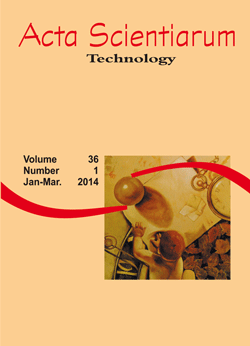<b>Tax calculation proposal for waste collection based on the amount of residential solid waste</b> - doi: 10.4025/actascitechnol.v36i1.16933
DOI:
https://doi.org/10.4025/actascitechnol.v36i1.16933Keywords:
RSW collection tax, case study in João PessoaAbstract
This study aimed to elaborate a mathematical model to estimate the amount of residential solid waste (RSW) generated and thus, to propose an alternative methodology for calculating the waste collection tax (WCT) for the city of João Pessoa, in Northeast region of Brazil, based on the estimated amount of RSW generated rather than on the constructed area of the residence, as is the case for this city. The methodological procedures consisted of daily weighing of the RSW along with readings of water and electricity consumption in three multi-family buildings and two single-family houses in the city of João Pessoa. Results have shown that the RSW generation rate was 0.526 kg capita-1 day-1 in apartments (multi-family buildings) and 0.794 kg capita-1 day-1 in houses (single-family residence). Results also indicated that water consumption was highly correlated with RSW generation and that it is possible to estimate the amount of RSW generated in a residence considering its population and water consumption. Based on this model, a new methodology for the WCT calculation was proposed: an alternative which relies on the estimated amount of RSW rather than on the constructed area.
Â
Â
Downloads
Downloads
Published
How to Cite
Issue
Section
License
DECLARATION OF ORIGINALITY AND COPYRIGHTS
I Declare that current article is original and has not been submitted for publication, in part or in whole, to any other national or international journal.
The copyrights belong exclusively to the authors. Published content is licensed under Creative Commons Attribution 4.0 (CC BY 4.0) guidelines, which allows sharing (copy and distribution of the material in any medium or format) and adaptation (remix, transform, and build upon the material) for any purpose, even commercially, under the terms of attribution.
Read this link for further information on how to use CC BY 4.0 properly.



















8.png)




